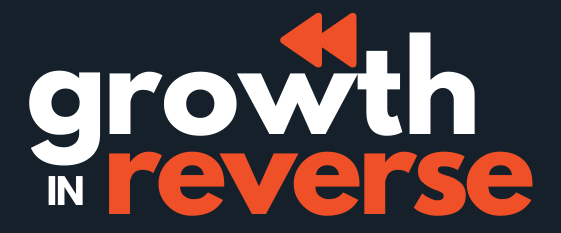Kyla Scanlon went from selling cars in college to distilling complex finance topics into short TikTok videos.
3 years ago, Kyla went from having no social following to over 650k followers across platforms, contributing content for Bloomberg and writing a newsletter with over 57k subscribers.

As with most things, there is background here of course. Kyla had been writing a small blog called “Scanlon on Stocks” where she would share her thoughts on companies and their performance.
While these didn’t exactly “take off” for her, they definitely gave Kyla some great experience with writing and sharing her ideas online.
Scanlon has a background in finance, economics, and data analytics, having majored in these subjects at Western Kentucky University.
She has been trading options since she was a teenager
Her writing has been featured in New York Magazine,
Now, she writes Kyla’s Newsletter, where she turns otherwise hard to explain topics into easy to understand economics.
How She Makes Money
Kyla’s monetization strategy is unlike a lot of other creators. She isn’t monetizing in a ton of different ways at this point.
Paid Newsletter
While Kyla has a paid newsletter, she doesn’t restrict any content. It’s more of a “support this work” type of model.
We saw this with Heather Cox Richardson as well, but it’s pretty rare in the creator space to not have sponsors or a paid newsletter.

Book
Kyla has also written a book called In This Economy that is being traditionally published by Penguin Random House. It’s available for pre-order now, but will officially be available at the end of May 2024.

I have to wonder how many people will preorder the book because it’s a way to support her work without paying $10 a month.
Pretty smart move if it works out.
Entrepreneur In Residence
Kyla became an Entrepreneur In Residence with O’Shaughnessy Ventures in January 2023.

The details of this are a little unclear, but it sounds like she’s getting monetary and team benefits from this partnership.
Here is a quote from Jim O’Shaughnessy about the partnership:

We saw something similar to this with David Perell and The Cultural Tutor. David pays a stipend of sorts to Sheehan (the writer behind Cultural Tutor) to create some breathing room so he can keep doing what he loves, writing.
Sponsorships
Kyla seems to have one sponsor, Public, which is listed on her videos and podcasts.
I don’t have any monetary insight into this deal, but I love the idea of having one main sponsor instead of looking for new ones each week.
The Growth Timeline of Kyla Scanlon
Kyla has absolutely exploded over the last 3 years.
Let’s take a look at the growth timeline to get a better understanding of the path to building her 57k subscriber newsletter.

You can see this all started with TikTok. She published her first one back around August 2020 but didn’t really start pushing this out as a consistent channel until December of that year.
Since then, she’s been able to translate those learnings into multiple other platforms, including YouTube, Twitter, Instagram, and of course, her newsletter.
The Growth Levers of Kyla Scanlon
There are a number of growth levers Kyla has used, but here are some of the ones I think we can learn the most from.
🎨 1. Turn complex ideas into relatable topics. Kyla has a knack for taking topics like monetary policy, or the housing crisis, and turning them into a story her viewers can relate to.
🤓 2. Let your nerd flag fly. Economics, finance, monetary policy. These are some dull topics on the outside. But Kyla is so passionate about these, it makes her viewers excited about them too.
🎥 3. Short-Form Content. Her short videos have helped her explode her growth and drive people back to her newsletter in the meantime.
⚙️ 4. Build an ecosystem. Kyla is everywhere, and constantly experimenting with new content. This is how she links everything together.
Alright, let’s dive in and go through each of these and how you can replicate them for your own growth.
1. Turn Complex Ideas Into Relatable Topics 🎨
One of Kyla’s biggest strengths is being able to take really confusing and hard-to-understand ideas and making them understandable for the average person.
And it’s one of the reasons she’s exploded her audience in the past few years.
She can take topics like inflation and the complex backstory into everything that impacts it, and explain how it’s impacting what’s happening in the news that day.

Or she’ll explain how 2-3 big news stories of that week tie together and are related even if they might not seem like it on the surface.
It’s almost like Kyla says what major news and media outlets aren’t willing to – she exposes the headlines behind the “headlines.”
And people love this, because they don’t have the time to read all of the policies being implemented around the housing crisis, or what they mean for the average person.
With the way the mainstream media is these days, it’s hard to know what’s really happening behind the clickbait headline. And she helps distill that down into something relatable.
This reminds me a lot of Heather Cox Richardson, and while the delivery is different, in the end, they’re both making the news more digestible.
Because Kyla explains these topics in a way they can talk about with their friends, people share her content.
Kyla says that her mission is to “humanize finance,” and I think she does a great job of that.
2. Let Your Nerd Flag Fly 🤓
Kyla lives, eats, and breathes the economy and finance – and it shows in everything she does.
Watch any of her interviews, even on big platforms like Yahoo Finance or Barron’s, and she’s smiling, laughing, and thinking deeply about the questions she’s asked.
You can tell that she reads and learns about this stuff all of the time, as she’s able to tie stories from years ago to the present day.
This has become so obvious to me while researching Kyla’s journey.
How is this a growth lever?
When you’re so excited to wake up and do research into the Fed and economic news, you’re going to start rising to the top of your game.
People notice your work and the passion you have behind it.
Not to mention, when you have a bad day or you’re not growing as fast as you want, the thing that will keep you going is your passion and excitement for the topic you’re creating content about.
Kyla said she spends 40% of her day reading, which allows her to stay sharp and keep creating for her audience.
Kyla writes about the passion crisis in a few articles. She argues that the modern world makes it hard to find what you truly enjoy in life.
Follow the Data
Kyla uses her love for data to see what’s working and to inform her content.
It sounds like something all creators do, or at least should do right?
Well, do any other creators you know analyze data from TikTok like this?
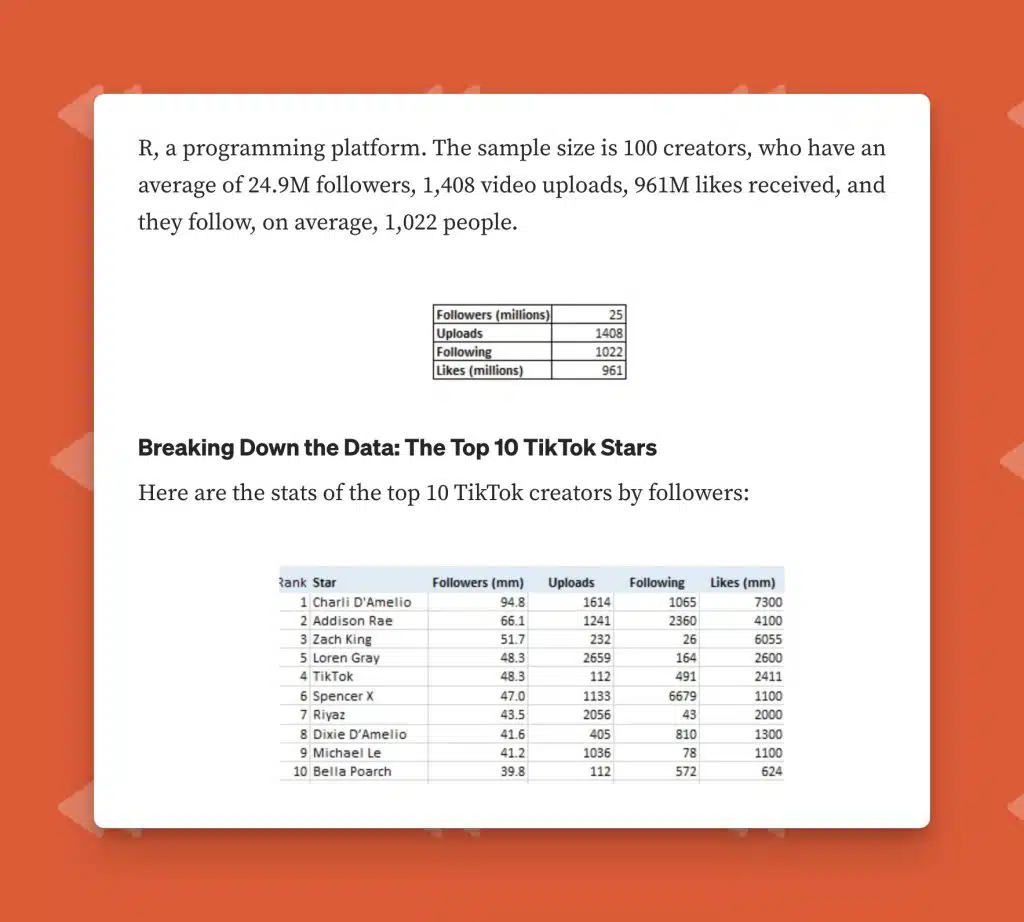
This is jut another example of her showcasing her passion for the numbers and using data to drive her decisions.
3. Short-Form Content 🎥
Kyla started posting on TikTok in December 2020. At first, she was just sharing historical economic examples but quickly realized there was an appetite for someone to explain what was happening in the modern world.
“I started making TikTok’s around December 2020, right around when GameStop started happening. I had just left my job at Capital Group, so I was no longer under compliance. The markets were so wacky then that it was almost impossible not to make content like that.
Kyla Scanlon
Kyla believes that memes and short-form videos are the future of news.
Videos are “how the younger generation gets their news.”
And she does a helluva job creating them. She has tested out multiple formats to keep her viewers engaged.
Here are some examples:
A. Skits
Kyla will act out well-known people in the headlines, and almost give a “day in the life” type of video for her viewers.
Here’s one she created about Elon Musk.

This video on TikTok got 44,300 views.
She also started sharing these videos on Twitter, and the Elon one was a pretty hilarious one to start doing that with (considering he owns the platform).
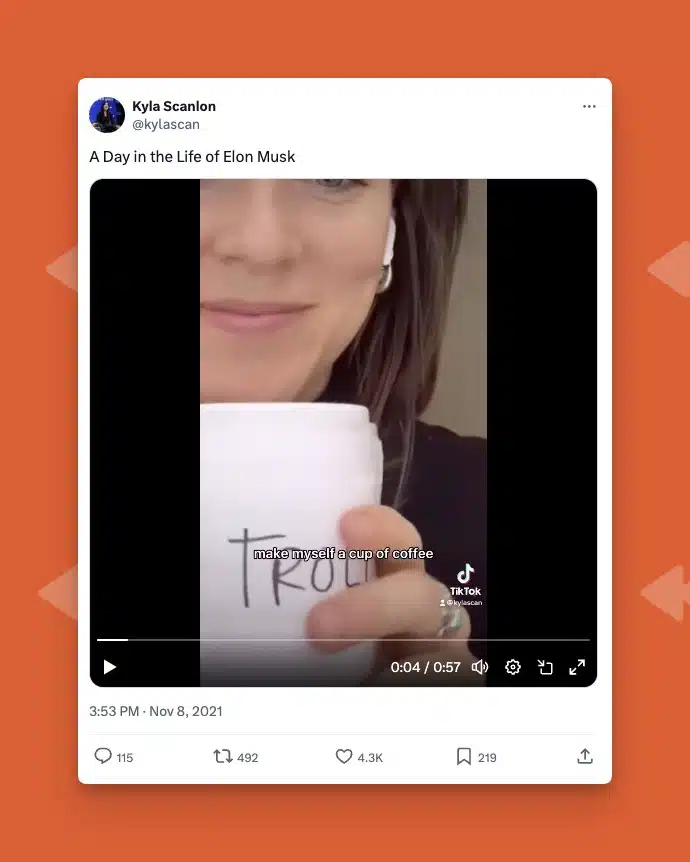
After economic related events happen, she’ll do skits recapping what happened from Jerome Powell’s perspective.

This Jerome Powell skit from Kyla was timely and full of hilarious jokes.
The post itself was retweeted over 1,000 times and got 7,800 likes.
And it led to 6,300 Twitter followers the week she posted it.

B. Whiteboard Videos
Kyla will sometimes film herself writing out ideas or thoughts instead of just talking to the camera.

She does this to break up the monotony of a talking head-style video.
C. Written Diagrams
Similar to the whiteboard videos, sometimes she’ll just draw out ideas on paper.

These are simply examples of her changing the format of the content, but I don’t want to gloss over the point of this: we need to keep changing it up.
By creating these short videos, she’s showcasing her knowledge about the situations and economics, and getting people to follow her. The different styles of content help keep those viewers coming back for more.
TikToks as Poems
Here is a fun fact Kyla shared with Paul Millerd on The Pathless Path podcast:
When asked about her TikTok creation strategy, she said “I write them as poems.”
And now I can’t unsee this. The beats and temper and the format of these short-form videos are written as poems.
Here is one that reads like a poem. The cadence, the short lines, etc.
Fascinating. I hadn’t heard a short-form video creator explain it like this.
Knowing What to Create Next
A side benefit of this is being able to explore what topics resonate with people.
If you remember from the deep dive on Dickie Bush, he talks about experimenting with ideas in the short-form versions (i.e. Tweets and threads) and using the data from those to decide what to write longer articles about.
For example, if something gets a lot of shares and comments, it’s a sign that people are interested. If it doesn’t, then maybe it’s worth testing out another idea until you find something that resonates enough before writing a full article on it.
Kyla is doing the same thing. If one of the ideas she mentions offhandedly in a TikTok gets comments and more buzz around it, she can expand that into a full piece – which then gets created into a YouTube video, podcast, and article.
4. Building an Ecosystem ♻️
Kyla isn’t just creating short-form videos, and writing articles. She’s creating a content ecosystem for her followers.
This does 2 things:
- It gives people a chance to consume her ideas in the format they enjoy most
- It gives her the opportunity to speak to them multiple times
Kyla is building an ecosystem she can use to help people go deeper on the topics and ideas she’s sharing.
Let’s walk through each of these layers so you can see this in action.
Substack
Her Substack newsletter is where she shares her longer-form written pieces. These can help people go deeper into the content.
But from her newsletter, she’s driving people back to her other channels.
Remember Harry Dry from Marketing Examples and how he used growth loops?
Here’s a quick refresher of Harry’s growth loop using Twitter and his newsletter:

Kyla is doing this but with 4+ other platforms as well.
In my head, it looks something like this:

While there is something to be said about focus, with the style of content she’s creating (more news oriented), I think this makes sense.
She is spreading herself across platforms, which can lead to slower growth overall. But it seems to be working for her.
Okay, back to how she’s doing this.
TikTok & Instagram
Kyla posts almost daily on TikTok and Instagram.
These are like the top of the funnel because they get tons more views than her written content does at this point. These channels help her get discovered.
She shares an Instagram Reel right after hitting publish on an article, with a screenshot of the full piece.

In this video, she essentially does a short-form video version of the entire piece – sharing why it’s important and some of the main concepts.
At the end, she mentions the essay and says you can find more there. But smartly, there is no link to the piece, as this might hinder the reach of the post.
Instead, she comments and says you can find it on Substack. With a quick Google search using “kyla” and “substack”, it’s easy to find.

YouTube
The next day, she posts a full video on YouTube about this idea:
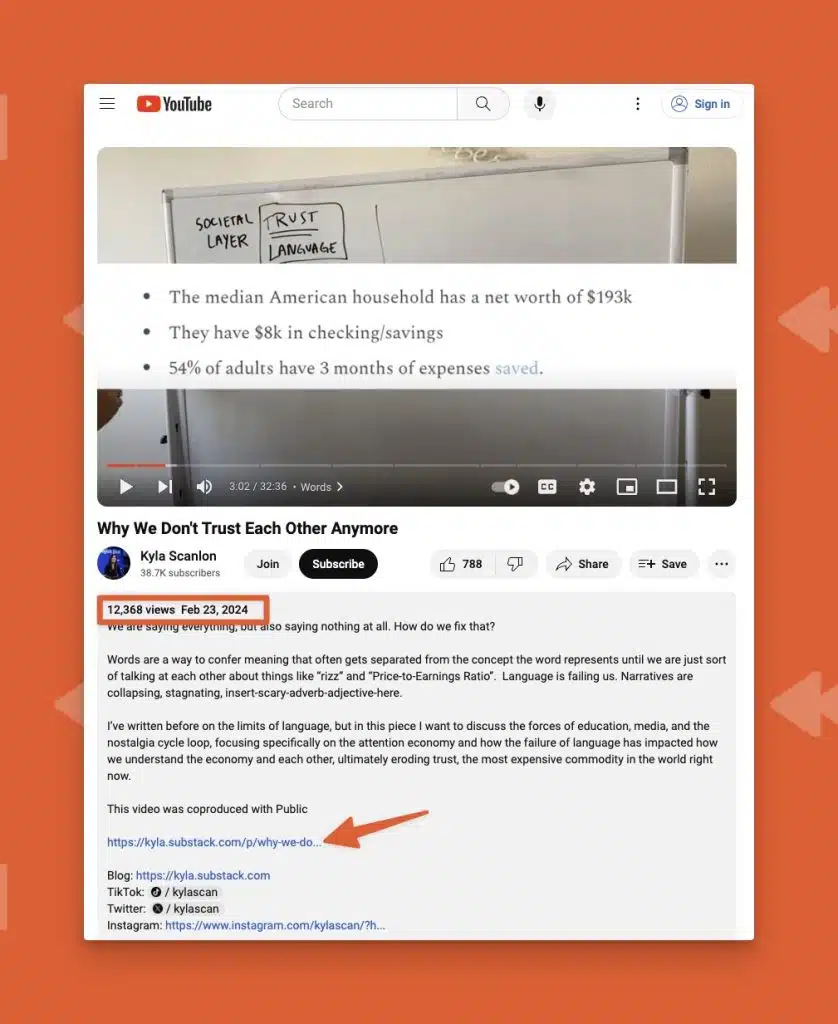
This video has gotten over 12,000 views as of this writing. However, if you talk to any YouTube creator, they’ll tell you that YouTube is a long game and videos often go viral months after being posted.
This channel is a much more evergreen place for Kyla to be posting her content, which doesn’t surprise me at all that she’s leaning into YouTube after years of posting daily short-form videos that have much shorter lifespans.
Podcast
On the same day, she posts an audio version of this video as a podcast episode:

Some people enjoy listening to content versus watching a video or reading the full piece. She’s giving those folks a chance to do that with her podcast.
Kyla posts on LinkedIn about this piece a few days later.
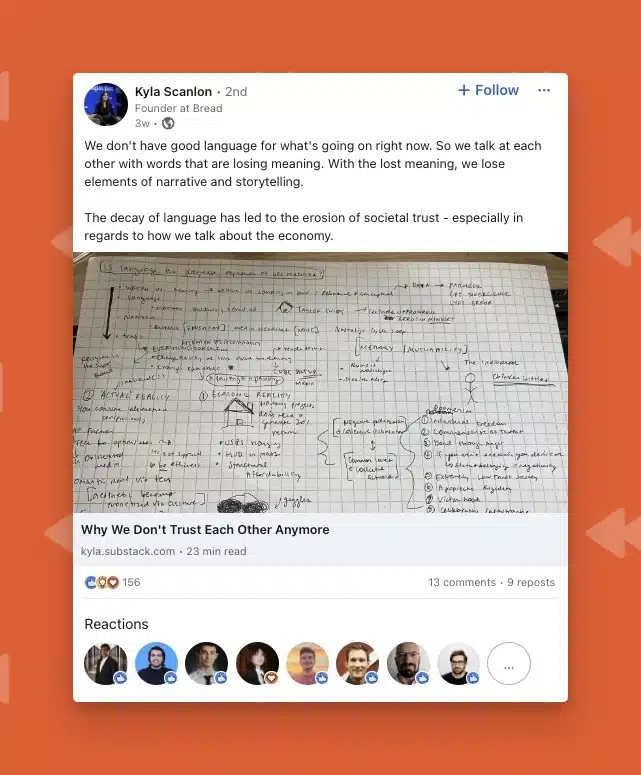
Followed by her sharing the YouTube video on LinkedIn as well.

I didn’t even include LinkedIn in the visual I created before because it is a smaller channel for her. But it is worth mentioning.
Repurposing Content
In one TikTok video, she starts talking about how she was able to interview someone for a piece she wrote, and then she flashes a screenshot of the newsletter.

Again, no link to make sure she gets good reach, but people who really want to read this will Google it and find it.
Some Interesting Data
While her Instagram and TikTok videos seem to get the most views, I wanted to check some other data to see if I could figure out which social platform sent her the most newsletter traffic, and potentially, subscribers.
What I found was eye-opening:

The SimilarWeb data shows that LinkedIn and Twitter are far surpassing the website traffic she’s getting from IG and TikTok, as well as even YouTube.
I understand Twitter because she’s posting a lot over there. But LinkedIn is interesting because she posts there maybe once a week:

So I went down the rabbit hole to find other people mentioning her, because that had to be where this traffic was coming from.
And yes, there are a lot of other people sharing her work on LinkedIn – but the biggest I could find was Bloomberg.
Kyla has created a variety of content for Bloomberg and done a presentation at one of their live events.
It’s interesting to see that showcasing her work on other news outlets is driving more than just credibility.
How You Can Replicate Her Success
While we aren’t all going to get featured on Bloomberg, I think there is a lot we can learn from Kyla’s story.
Create an Ecosystem
Kyla makes sure her audience can experience her content in multiple ways. I’m not asking you to publish on 7 different platforms, but there is an opportunity to link between the places you are publishing.
If you’re sharing ideas on Twitter, you’re probably linking to your newsletter. But are you sharing those tweets in your newsletter and sending people back there?
Many creators think they need to “own” all of their traffic. But by sending people back to Twitter (or another social platform), you’re giving those people a way to hang out with you in other ways.
This benefits your social posts too, which can drive even more people back to your newsletter.
Change Up the Pace
Not only is she creating content on multiple platforms, but she’s thinking about how to keep things interesting for her audience on those platforms.
People love consistency until they don’t.
Consistency with your content is great in the beginning, people enjoy knowing what to expect.
But at a certain point, it might make sense to change up the style a bit and give you readers something different.
After seeing how Kyla does this, I decided to test this theory out for myself.
I’ve been writing these deep dives for over a year, and while I know they are valuable for people, it can get to be a lot.
Each article is 3000+ words and covers a lot of ground. It’s almost like adding multiple “to-do’s” to my audience’s already long list of things they want to try.
So last week I did something different. I shared the results from an experiment I ran instead of writing a deep dive. And you know what? I got more replies to that email than I had in the entire month before that.
People loved it:

And even more than that – not a single person mentioned that they wished I had sent a deep dive instead.
People enjoy a change of pace sometimes. It gives your readers a chance to catch up and take a little breather. And it keeps things interesting.
Think about how you can add some variety to your content mix.
If you missed that experiment, you can read all about how I missed out on 5,300 subscribers, and see the form that is performing 1400% better over here.
